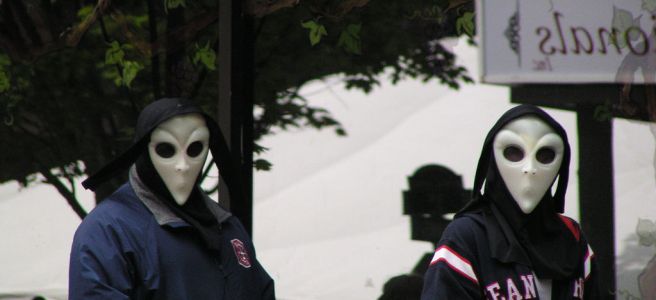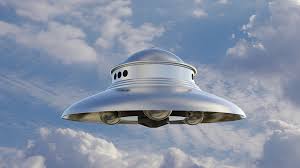History’s new series, Project Blue Book, has inspired among the ufophilic a range of reactions, from the tepid to the boiling, from “interesting, give it a chance” to outrage. Every response I’ve heard or read is more an example of ufomania than ufophilia, obsessed with the facts of and the truth behind each case the series (putatively) explores and the historical personalities involved, neglecting what the show, in fact, is, a cultural artifact.
Of course, History’s marketing of the series is directed at this ufophilic hunger for facts and truth, an appetite History cunningly toys with, simultaneously teasing and frustrating this desire with vacuous series and documentaries about Ancient Aliens and unsolved UFO mysteries. A glance at the channel’s description of the show reveals this bait and switch. First, History makes it seem like the series is a documentary:
Project Blue Book chronicles the true top secret United States Air Force-sponsored investigations into UFO-related phenomena in the 1950’s and 60’s known as “Project Blue Book.” … Each episode will draw from the actual files, blending UFO theories with authentic historical events from one of the most mysterious eras in United States history. [my emphasis]
Only after this disingenuous opening gambit is the series’ virtues as a television drama played up,
a drama series about the Air Forces’ 1952-1970 investigation into the UFO phenomenon. Blue Book is Mad Men meets the real life X-Files as it follows Dr. J. Allen Hynek and Air Force Captain Ed Ruppelt as they confront the very real possibility that we may be being visited and they may be pawns in a nationwide disinformation operation. … By 1970, Hynek will transform from ardent skeptic into avid believer, convinced that we are not alone. [my emphasis]
Here, History not only makes the unfulfillable promise that this series will somehow rise to the level of Mad Men and The X-Files, but mixes in a dash of conspiracy theory for X-philes with a dollop of never-fail ufophile bait, “the very real possibility that we may be being visited” and the satisfying transformation of an “ardent skeptic into avid believer, convinced that we are not alone.” This hitherto successful mix of fact and fiction is a volatile one, however, exploding in the face of History’s promotional department in the ufomaniacal disgust with the dramatic license the series takes with those “authentic historical events”.
Regarding the series from a perspective that tries to balance the contradictory claims the series make for itself reveals both its virtues and its eyeroll- and sigh-inducing failures. The opening scenes of Episode 1, “The Fuller Dogfight” are illuminating.
The opening shot is promising in its initial ambiguity: midair, at night, two lights, one red, one green, appear in a cloud. These first seconds present an image reminiscent of several from Close Encounters of the Third Kind. What are they? For a moment, we don’t know. Quickly, however, two training aircraft appear; the lights are theirs. The pilots have a brief conversation, and the trainee returns to home base. That Fuller’s plane then dives to buzz a football field disturbs the suspension-of-disbelief, as one would imagine that air traffic over an urban area, especially at night, would be carefully controlled. When the UFO does appear, its appearance is satisfyingly fresh: an indistinct, somewhat amorphous blue light, instead of the all-too-common “nuts-and-bolts” spaceship all-too-often depicted by special effects departments. But this surprising pleasure is quickly spoiled by the light’s being given a recognizable sound (however “weird”) that evokes alien technology; silence, rather, would have heightened the overall suspense. When Fuller opens fire on the light playing cat-and-mouse with him, the scene’s believability is again sacrificed at the altar of popular science-fiction. The scene reaches its climax with Fuller’s plane appearing to be lifted straight up in the light of the UFO, the plane’s wing suffering some mysterious damage in a shower of sparks, and Fuller screaming, in an uncontrolled descent.
If, for the sake of a broader perspective, we pull back from the Gorman Dogfight this scene allegedly alludes to, we might be struck by how much its final shots bring to mind the 1973 Coyne Helicopter UFO Case, wherein a military helicopter, too, experienced a sudden, uncontrolled climb, seemingly under the influence of a UFO. Moreover, Fuller’s plummeting downward brings to mind the crash of Thomas Mantell. These associations suggest the writer is subordinating history to drama. That, as we’re told before the episode begins, “The cases depicted are based on real events” is at worst misleading and at best ambiguous, and just how this ambiguity is resolved determines the amount of disappointment, frustration or outrage a ufophilic viewer will feel, for “The Fuller Dogfight” is not a representation of the Gorman Dogfight, but an amalgam of USAF pilot-UFO encounters, an archetypal ufological story. The writer’s creative license opens the space between historical and artistic truth, between the real events and the archetypal stories that make up the UFO mythology that is the real material of the drama, a space viewers apprised of this distinction can relax into or, ufomaniacally demanding the plot adhere to the facts, plummet into wailing like the damned.
The next scene, in the words of one its characters, is “compelling”. We cut, or segue, from Fuller’s plane in a twisting, uncontrolled descent, into a bright, white-yellow light, the pilot’s fate suspended, as the camera pulls back to reveal this illumination is a head-on shot into the blinding lens of a film projector (a segue repeated later in the first episode to interesting effect). This is the first in a dizzying sequence of reflexivities whereby the series foregrounds its own fictionality in order to comment on itself, an artistic device going back to Helen’s weaving a tapestry of the scenes she witnesses on the fields outside the walls of Troy in the Iliad, an image of the rhapsode’s weaving his tale. In this scene’s first reflexivity, the unseen television camera’s perspective is lost in the film projector’s light. The cameras’ respective perspectives might be said to fuse, establishing an equivalence between the two, and thereby between the televisual fiction we are viewing with whatever cinematic fiction is being projected, i.e., foregrounding their respective media foregrounds the fictionality of both the TV series and the film.
What is being screened, we see, is the closing of the The Day the Earth Stood Still (1951), at least until, as the camera pans out, a character I’ll call Air Force General 1 (AFG1) irritatedly orders it stopped. The plot of our modern UFO TV series frames that of a classic flying saucer film, a device that serves to foreground, again, the televisual fictionality of Project Blue Book; the overt fictionality of the film reflects back the tacit fictionality of the series, a fictionality otherwise repressed by the viewer in their suspension-of-disbelief, at least until they are nudged to reflection by just such instances of (generic) self-referentiality.
Next, an overhead shot shows a round table with twelve seats, most occupied by military men. The character at the movie projector I’ll call Mr Secretary addresses AFG1: “Truman assembled this group to control the narrative on this issue, not Hollywood, and we are losing that war.” The reference to “this group” assembled by Truman invokes the mythology around MJ-12, a clandestine dozen recruited to manage the extraterrestrial reality of flying saucers after the crash of one at Roswell (at least) and the retrieval of its pilots, dead and alive. More interesting, though, is how the fiction, again, folds onto itself: the fiction of the TV series presents a cinematic fiction (The Day the Earth Stood Still) as intervening in, governing or forming, “the narrative on this issue” (“this issue” supposedly the mystery of the flying saucers), competing with the the narrative the group puts forward in its own attempt to control or guide public perception of and reaction to rumours about flying saucers. That is, within the fiction of the series, the official fiction (the official lie that there is no such thing as flying saucers) is posed as competing with Hollywood cinematic fiction; a fiction that suppresses its fictionality (the official lie) wars with a fiction that stages its fictionality, the various filmic fantasies of Hollywood, all within the frame of the governing fiction of the series itself.
This war between the official story and the Hollywood story is curiously asymmetrical. The official story is one, while the Hollywood stories are many; but, more importantly, the former makes a claim to truth, while the latter is overtly fictional. That the two are staged to struggle in this way reveals how the mystery is answered in the real world by authority and imagination, the two woven inextricably into one tapestry of public ideation. Within the fictional world of the series, the war is between the claim there’s no such thing as flying saucers (as Captain Quinn tells Hynek when they first meet) and the speculation, however imaginary, that they are real and that they pose a threat to national, if not planetary, security. However, the Secretary’s words are comically ironic in how they juxtapose the spin of the series as a TV series and the spin of Hollywood. In other words, the war is not only one between the official version and the movie version in the fictional world of the series but also a kind of Oedipal agon between the Father of ufological entertainments, represented by The Day the Earth Stood Still and other classic flying saucer films, and the televisual Son, this latest iteration of “the narrative on this issue.” Regardless, if we grant that fictions, cinematic, televisual, or otherwise, can compete with the truth the way that so worries the Secretary, then the expression of his worry is also a confirmation of the social power of the fiction of which he is a part, namely Project Blue Book.
The third scene, Quinn’s office at Wright-Patterson AFB, is, most charitably, another instance of the pattern of reflexivity developed in the previous one that introduced Truman’s group. Quinn’s office is reminiscent of Agent Mulder’s, with all manner of pictures, maps, clippings, etc. on the walls. As Kevin Randle has noted, “some of the material there is out of place. It shouldn’t show up for years.” A case in point is a photograph of the Lubbock Lights to Quinn’s right just as he comes through the door into his office from the filing room. As we know now, the Lubbock Lights don’t appear until Episode 3. Either the continuity director has made a snafu, or, given the complex sophistication of the preceding scene, the articles tacked on the walls might refer to upcoming episodes. If the remainder of the first season bears out this hypothesis, then what would seem sloppiness is, in fact, a sly, aesthetic choice. And this is, strictly speaking, an hypothesis, as it admits of falsification!
I turn, now, from a close reading of the first episode’s opening scenes to a more general appreciation of Season One’s first three episodes.
Given the dilemma the series poses for itself, to be both a historical “chronicle” and a TV drama, the first episode (“The Fuller Dogfight”) is relatively successful, setting up the middle way the series will fictionalize the “actual files” (making of each case an archetypal rather than an historical moment), assembling the dramatic machinery that will drive the series (the conflict between Quinn’s duty and Hynek’s quest for the truth, the secrets hidden and manipulated by Truman’s group, the Men-in-Black, the mysterious blonde Susie, and the nature and purpose of the UFOs themselves), and establishing character (Hynek and Quinn already demonstrating a pleasing chemistry) and atmosphere (America in the Cold War Fifties).
Where Episode One explores the air force / UFO encounter scenario, the second episode (“The Flatwoods Monster”) stages the Crashed Saucer Retrieval myth, Hangar 18, and physical effects associated with close encounters. Again, its relation to the actual case of the The Flatwoods Monster is peripheral. But, where Episode One was a fairly intriguing, competent work of script-writing, Episode Two crashes and burns like the meteor / flying saucer that opens it. The behaviour of the townspeople is unmotivated, and the explanation Quinn offers (“fight or flight”) is nonsensical. Susie’s smoking in her darkroom is a volatile breach of verisimilitude almost as egregious as the ahistorical racial mix of citizenry in small town West Virginia. And a laugh-out-loud moment occurs when the mental patient Evelyn Meyers refers to the Men-in-Black as the “Men-in-Hats”, as if every man didn’t wear a hat at the time or the audience hadn’t by chance read any of the reviews of The Adjustment Bureau that make the same joke. The scriptwriter, not Evelyn, should have been thrown out a window for that howler. Nevertheless, the development of the Men-in-Black subplot (with Hynek’s guessing the string of numbers given him in Episode One maps co-ordinates to a location in Antarctica, and Evelyn Meyer’s passing him a photo of a mysterious obelisk) affords a small pleasure, along with the wit of explaining the monster as an owl, an important animal in later alien abduction accounts, regardless of the same explanation’s being offered in fact five decades after the actual incident.
The third episode, “The Lubbock Lights”, takes up the circumstances of the actual case to push the series’ narrative forward and to map further ufological archetypes, electrical interference (either vehicular or systemic), physical effects (burns and photophobia in Episode Two, paralysis here in Episode Three), and UFO radar returns.Where Episode One was fairly competent TV, and Episode Two catastrophically bad, Episode Three is middling. On the one hand, it handles its archetypal matter with some agility, and the (presumably) electromagnetic effects on the ruined truck are vividly imagined and, most importantly, original. On the other hand, no few snafus creep in, though less deleteriously than in Episode Two: that the lecture hall of witnesses is interviewed all together is serious breach of forensic protocol; there’s a serious plot hole that no ads can fill between Hynek’s and Quinn’s facing down the Lubbock townspeople on Hollister Street and their driving to the countryside; Susie’s toying or forcing the knob of the Hyneks’ front door makes little sense; and even though a witness claims the lights were silent, each time they fly over they do make a stereotypical alien spacecraft sound.
However much the show so far is a mixed bag, it does, happily, get some things right. It captures the trauma or stigma associated with a UFO sighting, as in Fuller’s obsessive derangement or the violence directed against the Downing family that reported encountering the Flatwoods Monster. That official air force involvement was an exercise in debunking has been understood since the earliest days of the phenomenon, as Donald Keyhoe’s first book reveals. The writers cunningly hide Easter Eggs for the series’ more vigilant fans. Fuller’s call sign is “Cooper”; Quinn refers to him as “Coop”, both a funny pun and, in the wake of Season Three of Twin Peaks, a sly allusion to Agent Dale Cooper’s nickname. General Harding’s chess partner is played by Steven Williams, the actor some viewers will recognize as one of Mulder’s Deep Throat informants, Mr X. More striking are the many allusions to Close Encounters of the Third Kind, inescapable given the material the series deals with and its archetypal approach to weaving it into its various plots: the song Fuller can’t get out of his head (“How High the Moon”) brings to mind the contactees’ obsessive visions of Devil’s Tower; the latitude and longitude given Hynek are reminiscent of the analogous communication received by earth’s scientists pinpointing the landing site of the ET Mothership; the burns the Downing children suffer is a close encounter effect they share with Roy Neary; the power outage in Lubbock is another shared plot element; and Quinn’s electrifying experience in his car is analogous to Roy Neary’s close encounter in his truck. Finally, along with reflexivities noted especially in the second scene of Episode One, is the running motif of the game, whether football, Scrabble, or, more prevalently, chess, harmonizing with and amplifying the various games played by the air force, the Men-in-Black, Suzie and her accomplice, other mystery figures, and the flying saucers and their putative pilots, themselves.
Whether or not the show’s failings utterly ruin it is a serious question. In one regard, it gives away too much too soon. An MJ-12 analogue appears in the second scene of Episode One, establishing immediately the series will concern itself with government cover-ups and conspiracies. By the end of Episode Two, we know already that Susie is a Russian spy, and the final scene of Generals Harding and Valentine in the show’s version of Hangar 18 in front of a crashed flying saucer under a tarpaulin introduces another all-too-worn cliché of the genre. By the end of Episode Three, it becomes clear the writers can hardly keep their story straight: the Secretary threatens to reveal all General Harding’s secrets to the President, the same General who reminded the gathered members of Truman’s group at the beginning of Episode One that “we don’t know what the hell we’re dealing with.” And the greatest irritant is the Roswell motif: everyone seems apprised of a flying saucer’s having crashed, its pilots’ being recovered or captured, and the air force’s clumsily covering it up. In Episode Two, when Hynek asks Quinn if aliens have been reported before the Flatwoods Monster, Quinn replies, “Not since Roswell.” In the same episode a local growls back to Quinn’s explanation for his and Hynek’s visiting the Downing household, “Like you boys did with Roswell, eh?”. And in Episode Three Donald Keyhoe exclaims to the radio studio audience gathered to hear him interviewed about his famous True magazine article, “The Flying Saucers are Real”, “We all know what happened in Roswell!”. Supposedly, the writers are taking up Roswell as an element of the myth, in the way they incorporate archetypal narratives and situations. Nevertheless, the sensibility of any member of the cognoscenti must be offended by this perversion of the actual development of the story around Roswell, a relatively unknown incident at the time and one that didn’t gain fame or reference to aliens until the 1970s. Here, the creative team seems to have opted to appeal to the ufophilic fascination for crashed saucers, captured aliens, and government cover ups, that Crash/Retrieval Syndrome with which the name Roswell has become representative and synonymous. Overall, the writers seem to have lacked the nerve to create and maintain mystery and suspense and the imagination to do anything different with the material, all of which leaves viewers possessed of any discernment suspicious the series is nothing more than another coarse ploy to cash in on a known commodity, despite its increasingly diminishing returns.
History faced a choice in producing this drama. Either, on the one hand, follow the facts very closely, resisting at every point the temptation to impose the ETH avant le lettre, recreating the process whereby the ETH was posited and finally abandoned (by Hynek, at least), to thereby refresh the received, sedimented version of the history of the mystery, creating in the process the suspense that might hook an audience made up of both believers and viewers new to the story, while assuaging the vigilant ufomania that has inspired the most vehement criticisms of the existing show, living up to its own insight that “Blue Book is the origin story of everything we know about UFOs and aliens in pop culture,” or, on the other, create an absolutely new scenario with new characters, one capable of aspiring to a synthesis of both the flavour and complex drama of Mad Men and The X-files, reinventing the origin story and subsequent mythology of the UFO, gambling alienating that existing demographic obsessively eager to have its alien and government conspiracy buttons pressed yet again to win a whole new audience and produce a whole new franchise. Instead, Project Blue Book attempts both and achieves neither. Being the History channel, it made sense to bait its existing audience dangling before it a series that “chronicles the true top secret United States Air Force-sponsored investigations into UFO-related phenomena,” basing each episode on the “actual files” and “authentic historical events,” a promise best kept by a show like the first option sketched above. However, both to satisfy the expectation of spectacle aroused by a UFO drama set during the Cold War and to grow the audience by tossing the ufophilic the Alien & Conspiracy bone, the series had to veer from the more austere but interesting docudrama it promised to be upfront, into the timidly confused and impossibly compromised version it seems to be turning out to be.
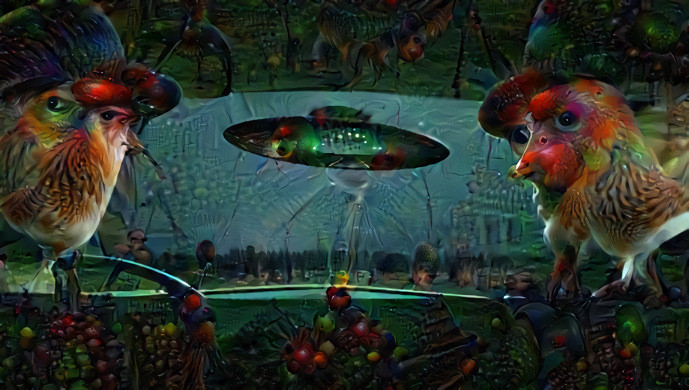

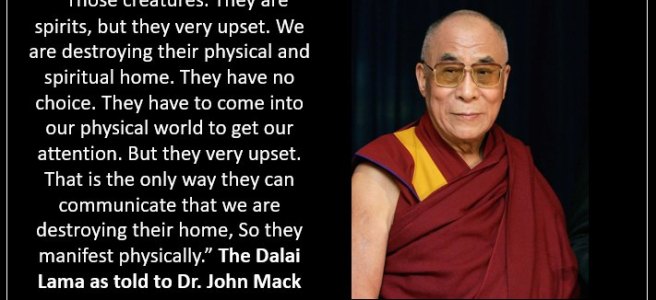



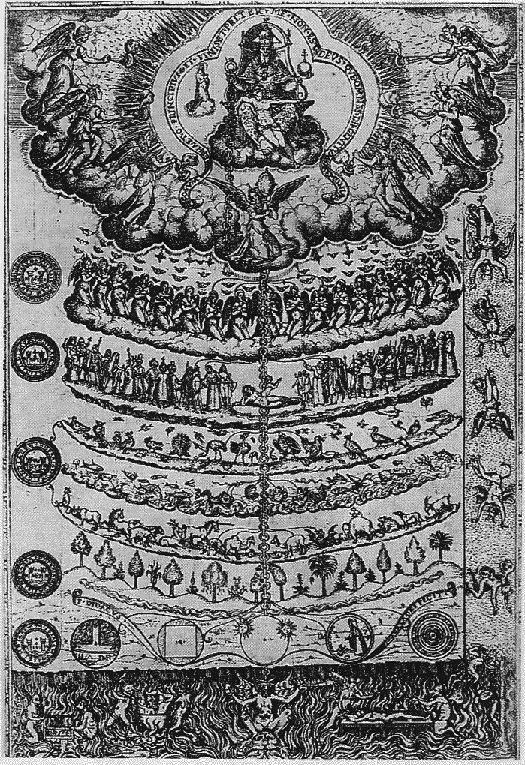
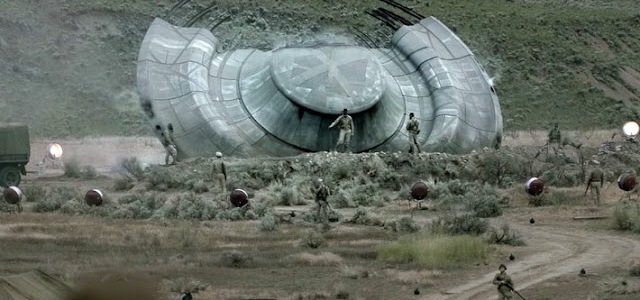

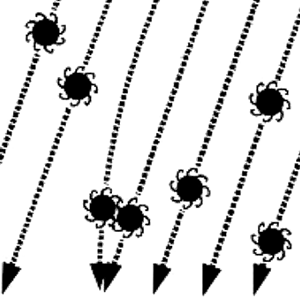
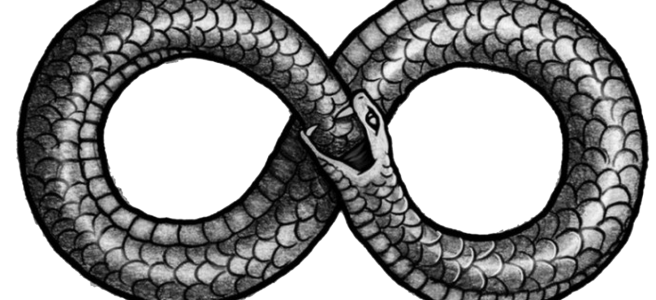




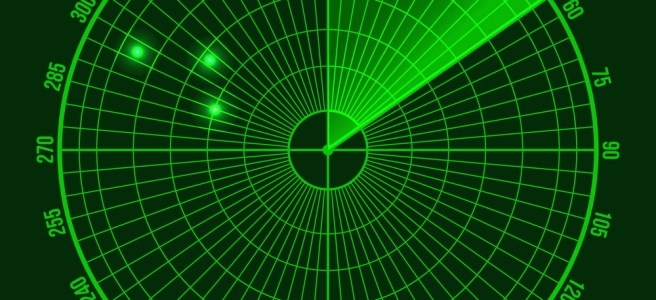
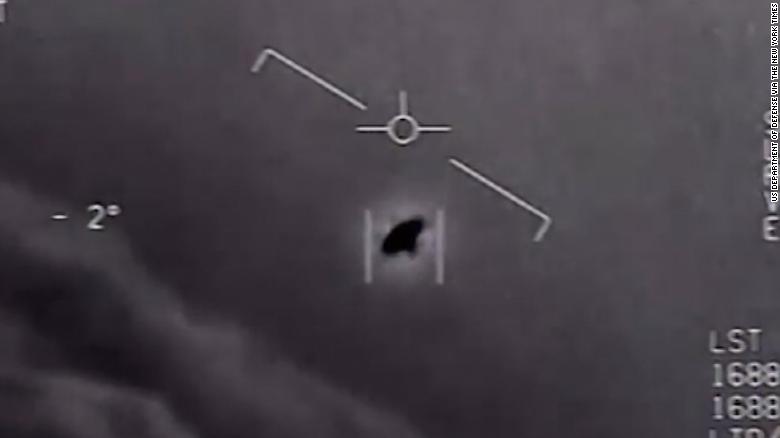
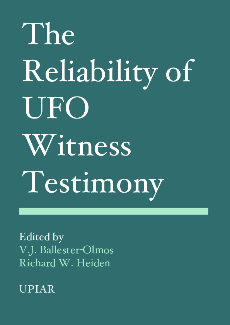





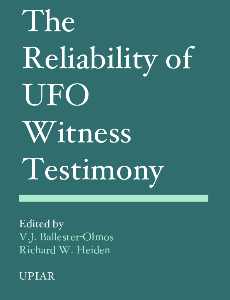





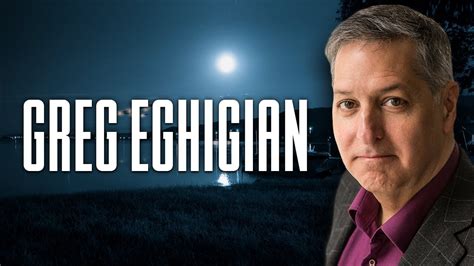

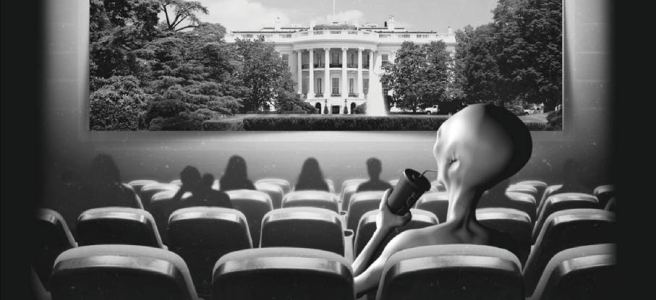



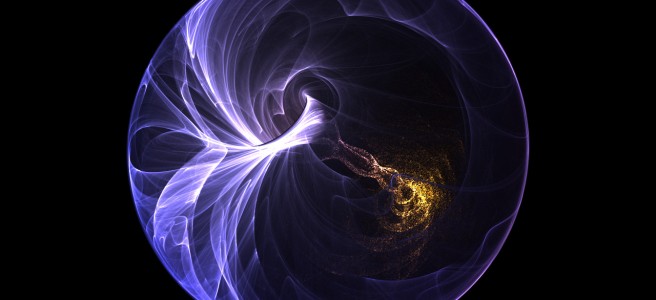
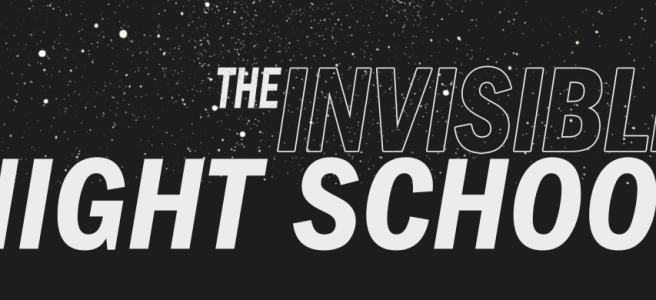

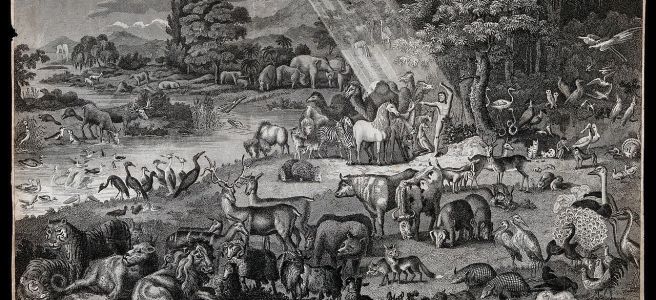
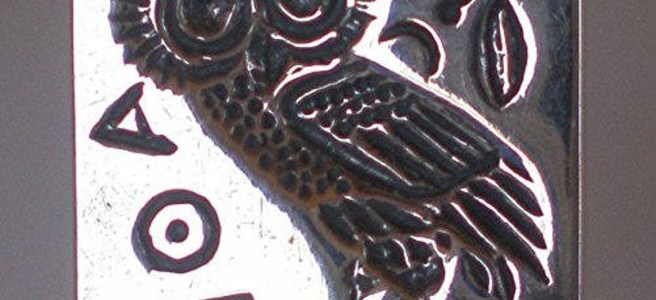
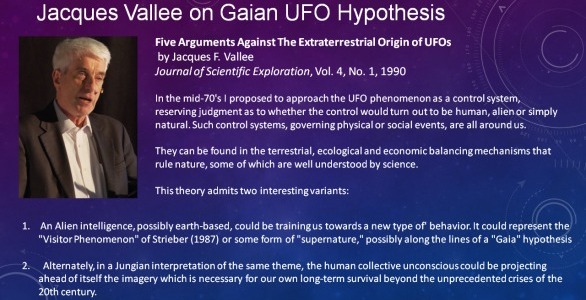
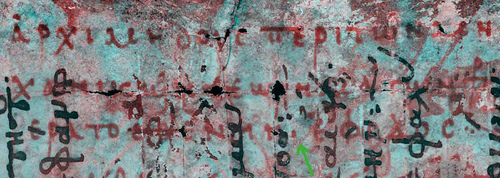




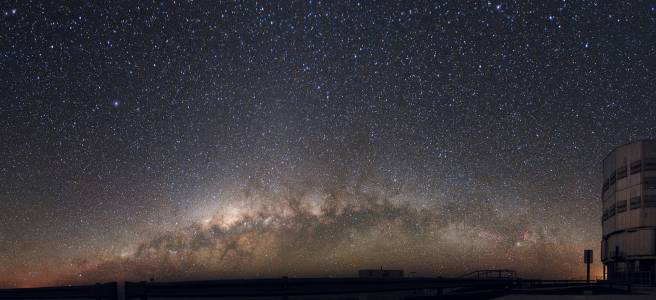




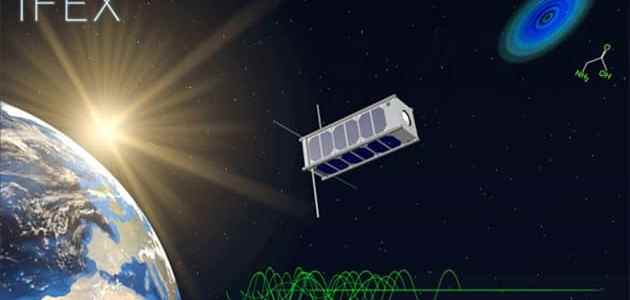








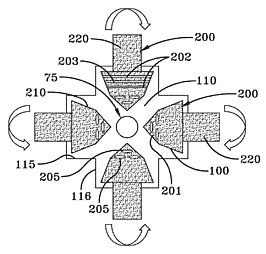





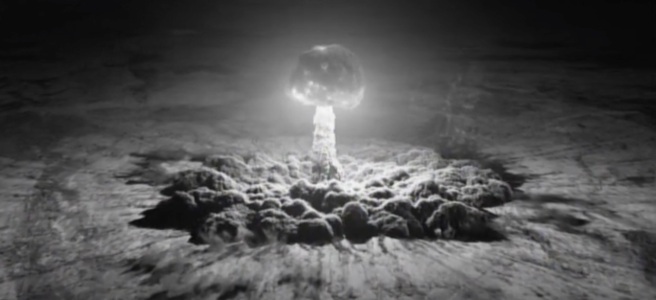



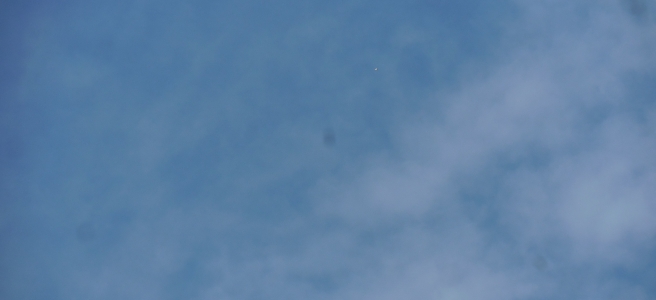
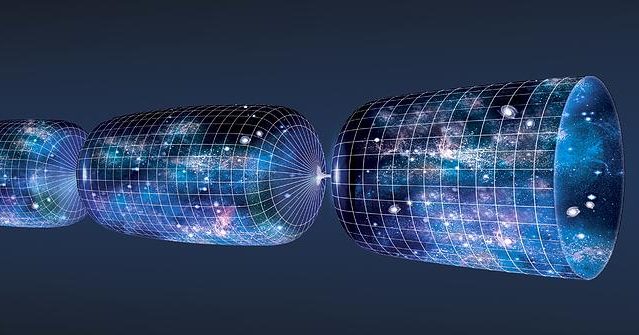
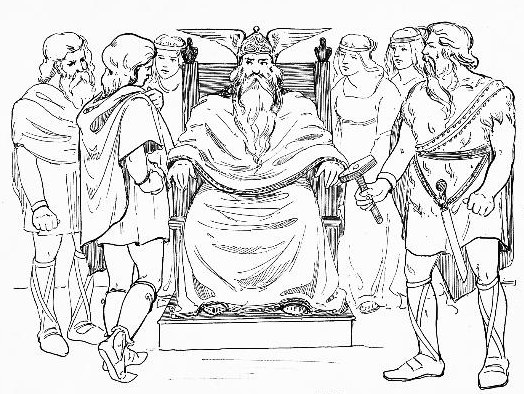
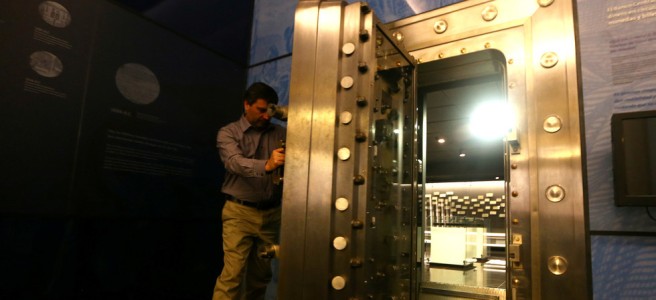

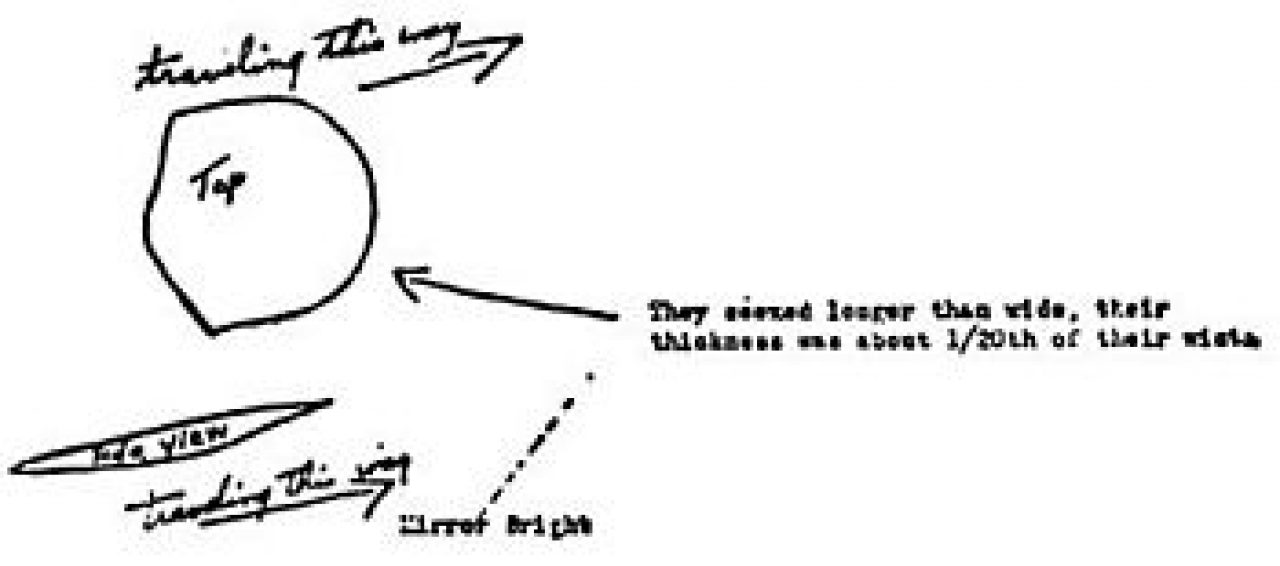



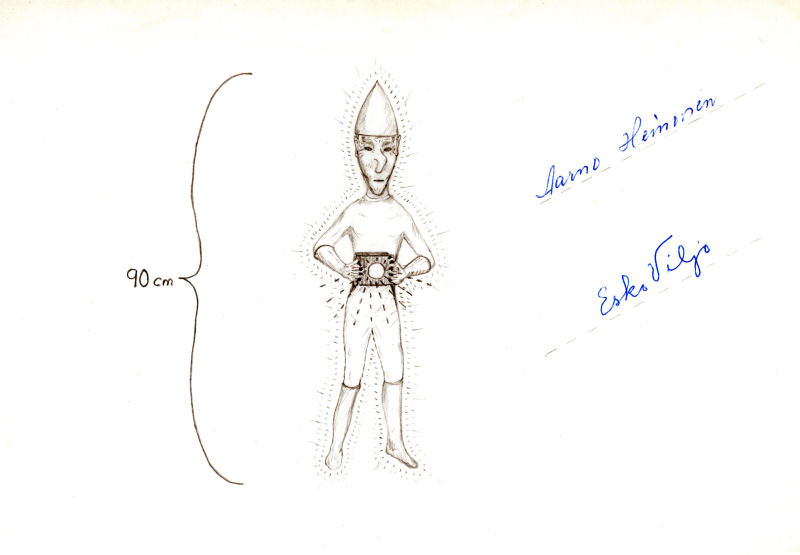


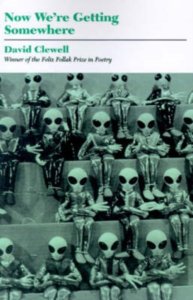


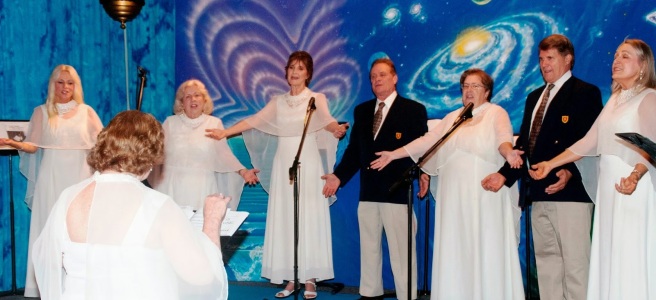

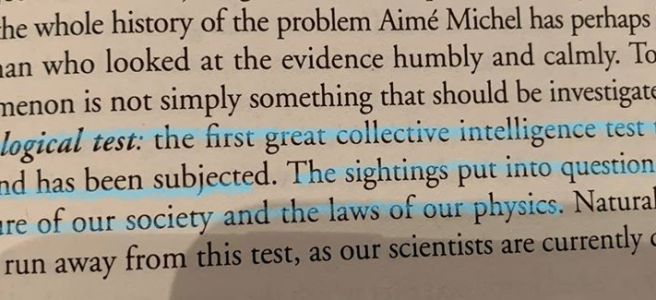
 alternate dimensions have reported encounters with
alternate dimensions have reported encounters with 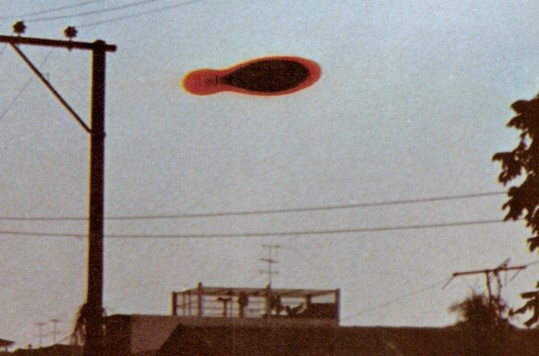
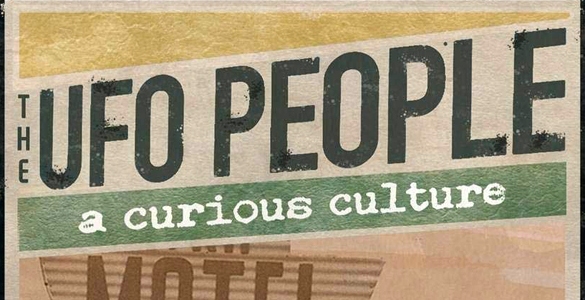





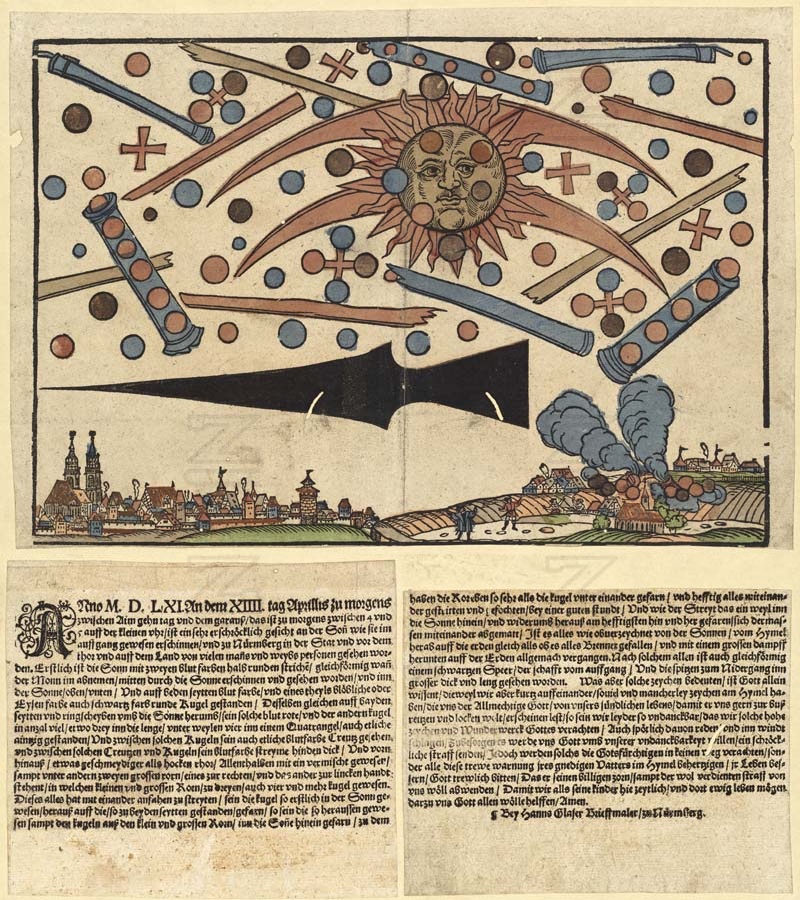
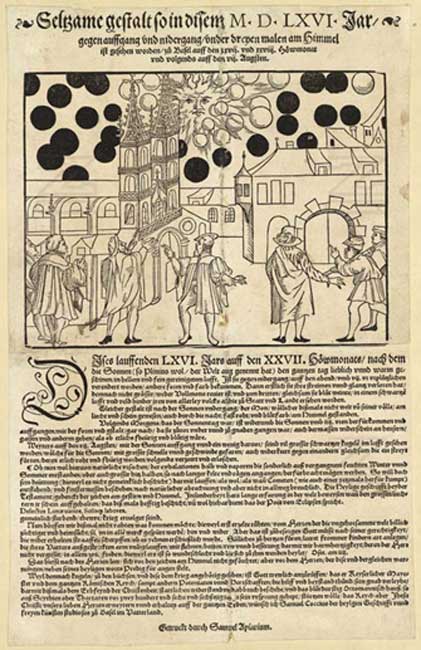


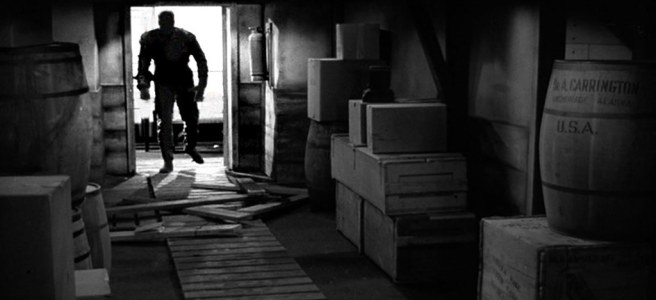


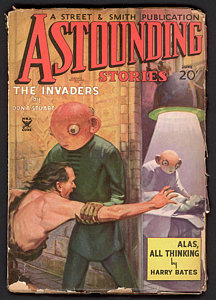 However, at the same time, he underestimates or discounts the popular culture presence of UFO and alien imagery preceding Arnold’s monumental sighting, as scholars and skeptics as diverse as
However, at the same time, he underestimates or discounts the popular culture presence of UFO and alien imagery preceding Arnold’s monumental sighting, as scholars and skeptics as diverse as 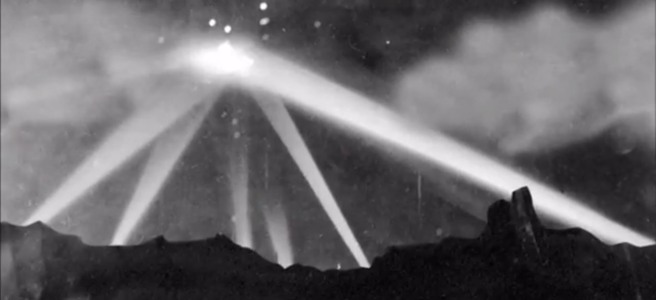
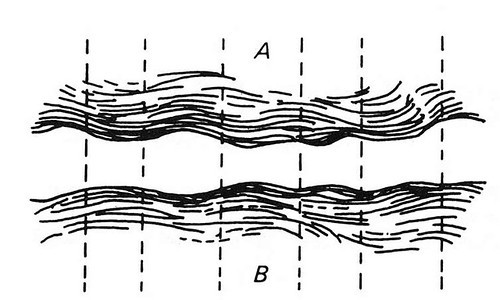

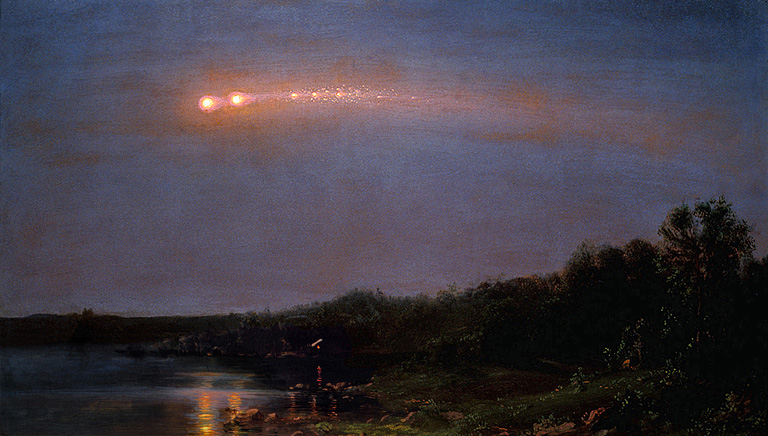
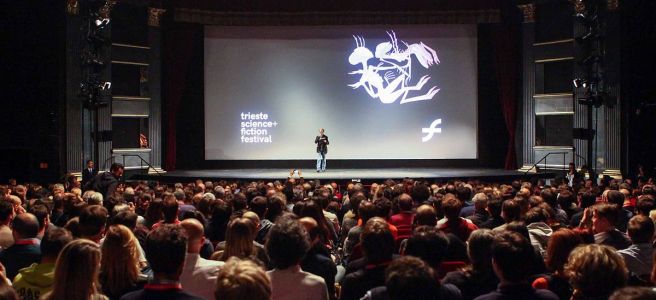
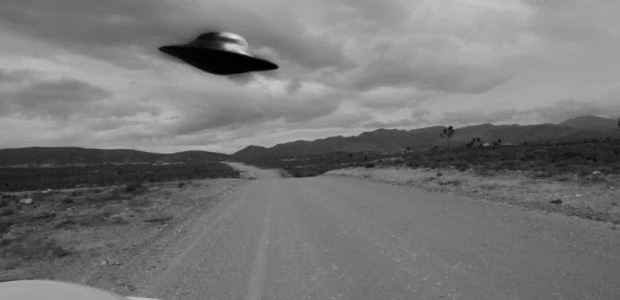

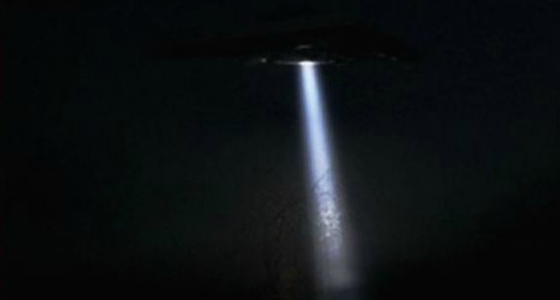
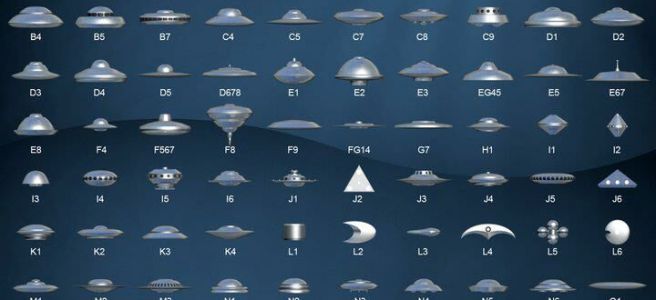
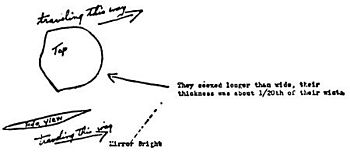







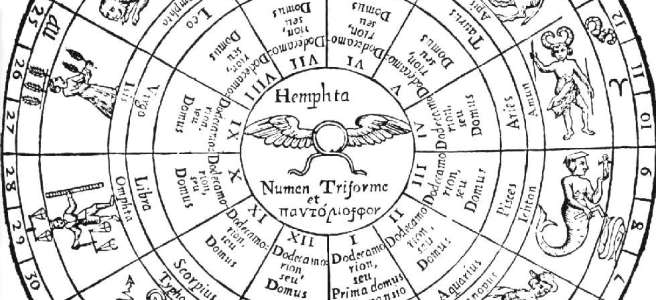
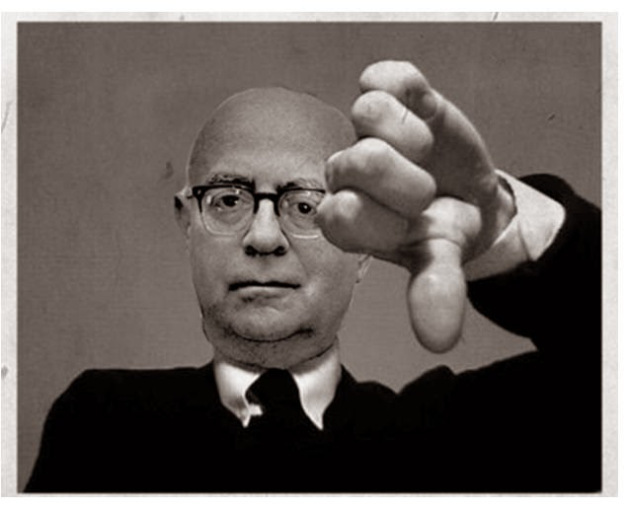


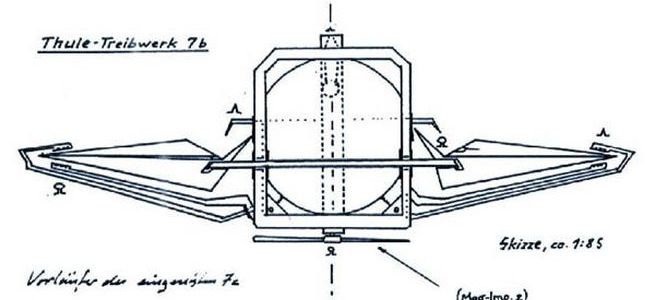
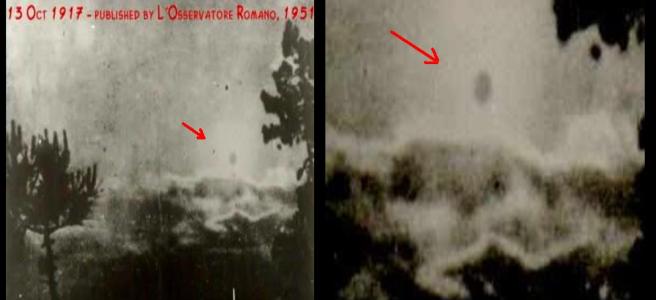
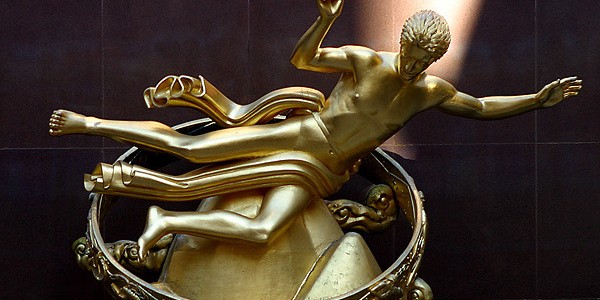

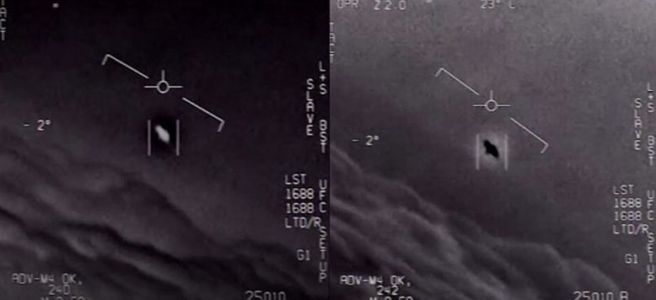



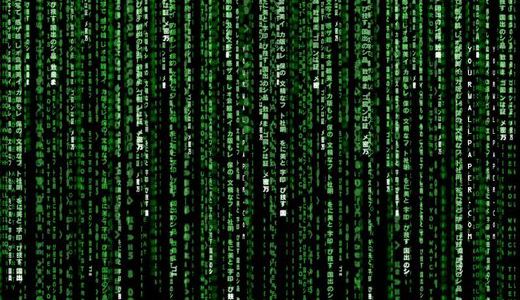
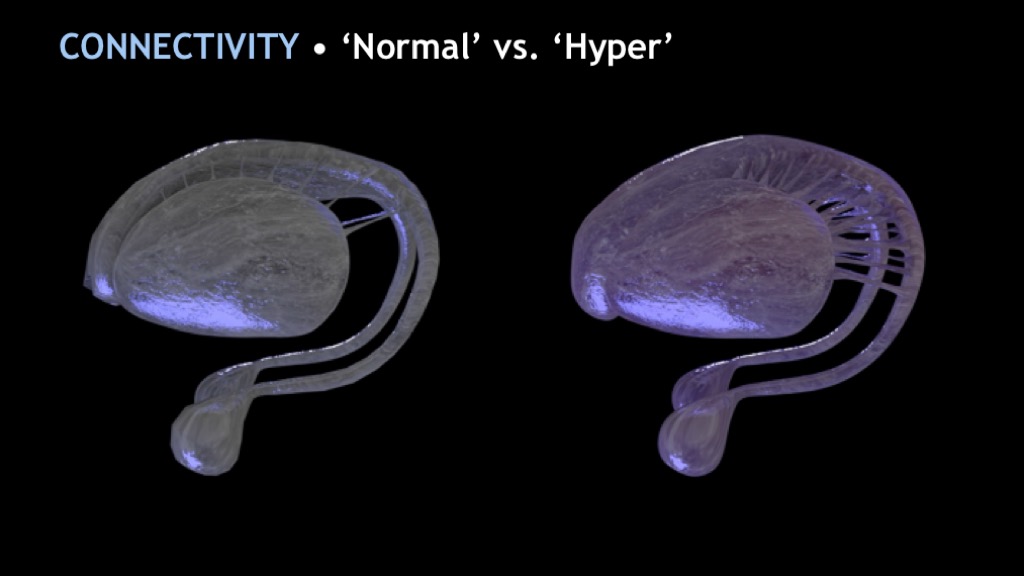
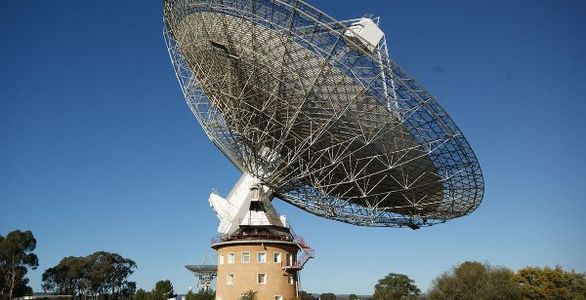

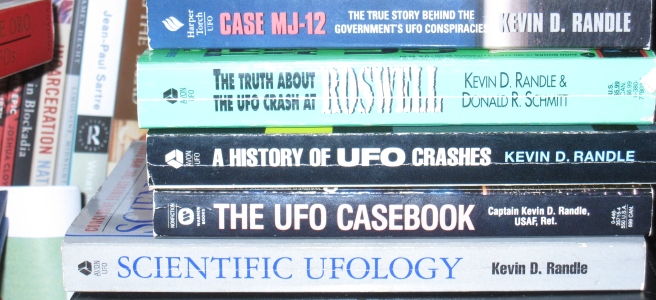




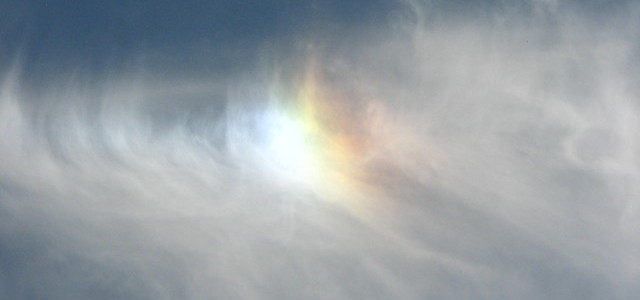
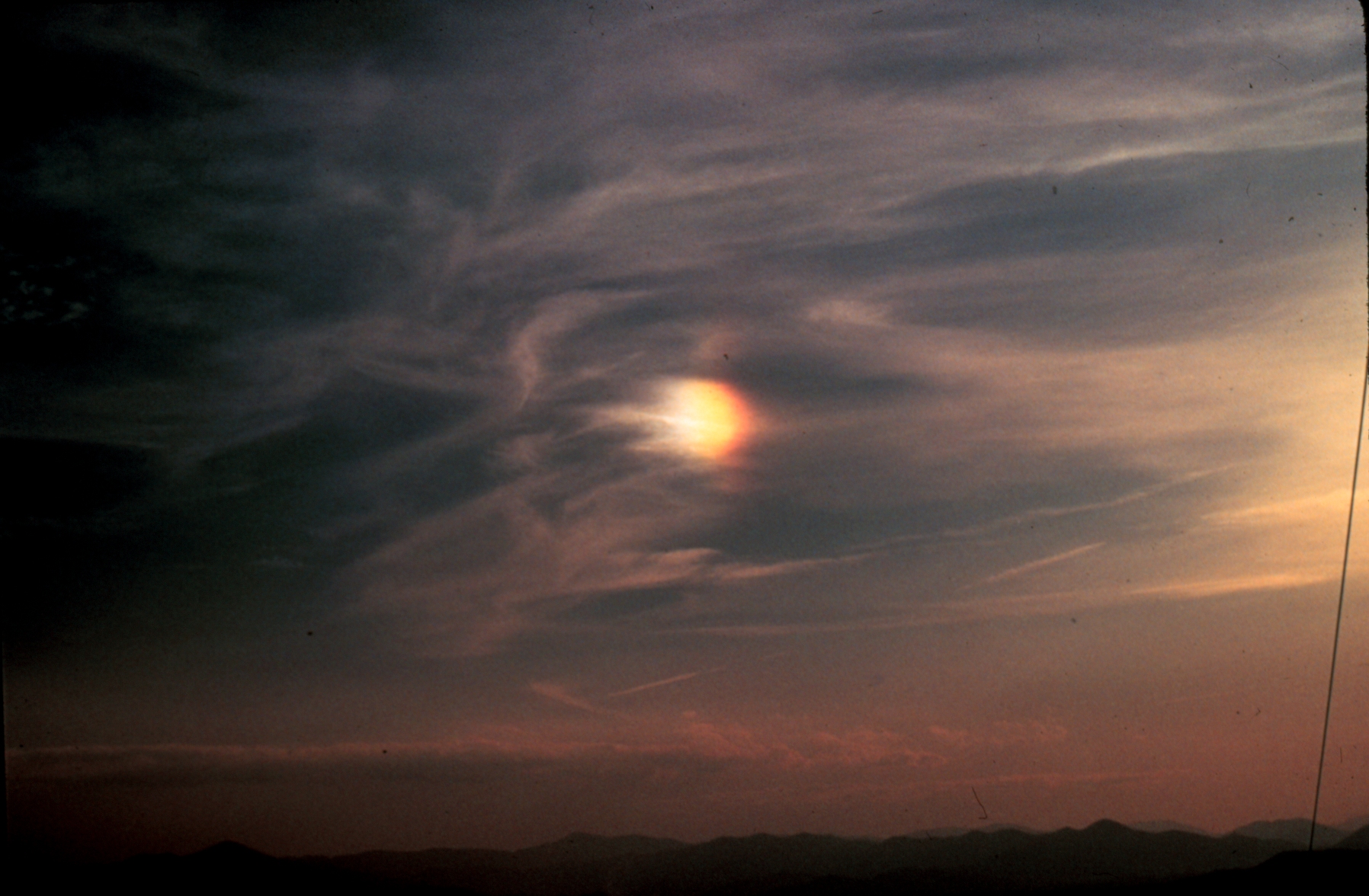
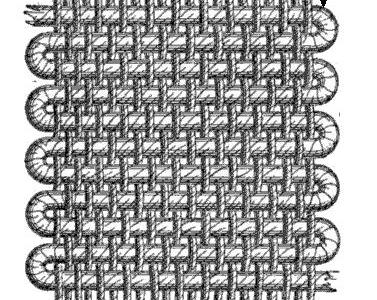

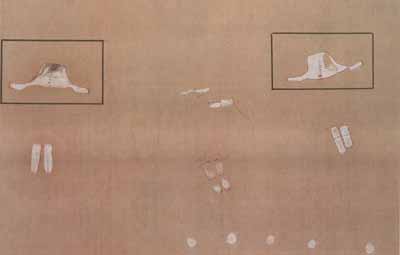

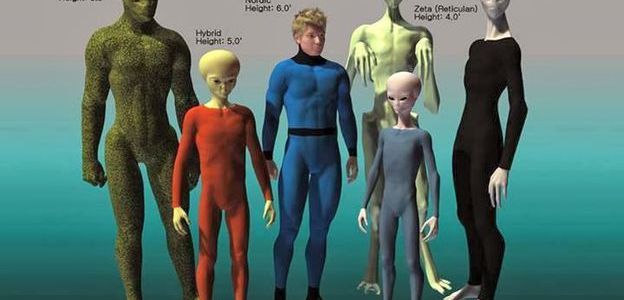

 beliefs about human-extraterrestrial interaction and a Secret Space Program. However, in the same mouthful, he also swallows the line that Trump was recruited and placed in power by a group of “White Hats” working to unmask and destroy the “Deep State” (“
beliefs about human-extraterrestrial interaction and a Secret Space Program. However, in the same mouthful, he also swallows the line that Trump was recruited and placed in power by a group of “White Hats” working to unmask and destroy the “Deep State” (“ extreme right” had been growing in the decade leading up to Vallée’s expression of concern and was about to effloresce in the years following. Ufologically, an important set of rumours was begun, first thanks to Stanton Friedman’s groundbreaking research into the crash at Roswell in 1978, which was quickly followed by Berlitz’s and Moore’s 1980 The Roswell Incident. By 1984, the MJ-12 documents had surfaced, and, by 1988, an entire submythology had developed, about crashed flying saucers, retrieved and back-engineered alien technology, recovered ufonauts living and dead, treaties with alien races that traded technological know-how for the rights to mutilate cattle and abduct human beings, underground bases both human and alien, and the struggle to reveal this “horrible truth” that culminated in the TV documentary
extreme right” had been growing in the decade leading up to Vallée’s expression of concern and was about to effloresce in the years following. Ufologically, an important set of rumours was begun, first thanks to Stanton Friedman’s groundbreaking research into the crash at Roswell in 1978, which was quickly followed by Berlitz’s and Moore’s 1980 The Roswell Incident. By 1984, the MJ-12 documents had surfaced, and, by 1988, an entire submythology had developed, about crashed flying saucers, retrieved and back-engineered alien technology, recovered ufonauts living and dead, treaties with alien races that traded technological know-how for the rights to mutilate cattle and abduct human beings, underground bases both human and alien, and the struggle to reveal this “horrible truth” that culminated in the TV documentary 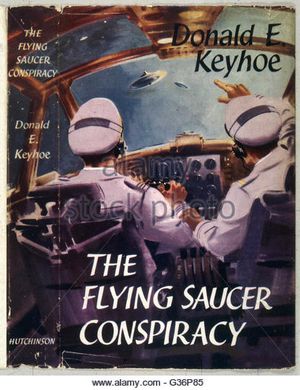

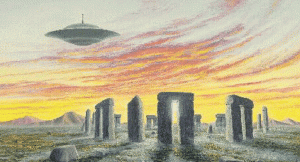 More importantly, the white supremacist sentiments that underwrite views about the inability of ancient, nonwhite peoples to construct monumental architecture spring not only from beliefs in European intellectual and technological superiority, articulated and entrenched in natural history and anthropology (race theory) but from the more deeply-entrenched technocentric / technophilic prejudices characteristic of European colonists, race theoretical hierarchies, and ufology in general, because it is the ideology of the so-called advanced societies.
More importantly, the white supremacist sentiments that underwrite views about the inability of ancient, nonwhite peoples to construct monumental architecture spring not only from beliefs in European intellectual and technological superiority, articulated and entrenched in natural history and anthropology (race theory) but from the more deeply-entrenched technocentric / technophilic prejudices characteristic of European colonists, race theoretical hierarchies, and ufology in general, because it is the ideology of the so-called advanced societies.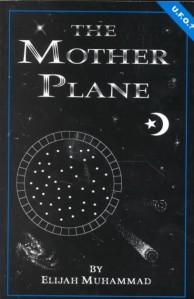 The Nation of Islam’s founder, The Honorable Elijah Muhammad, makes of Ezekiel’s Chariot a wheel-shaped “Mothership”; his followers, therefore, have taken
The Nation of Islam’s founder, The Honorable Elijah Muhammad, makes of Ezekiel’s Chariot a wheel-shaped “Mothership”; his followers, therefore, have taken 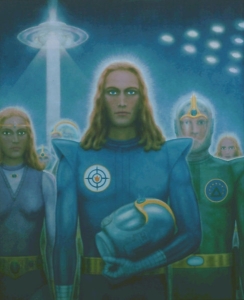

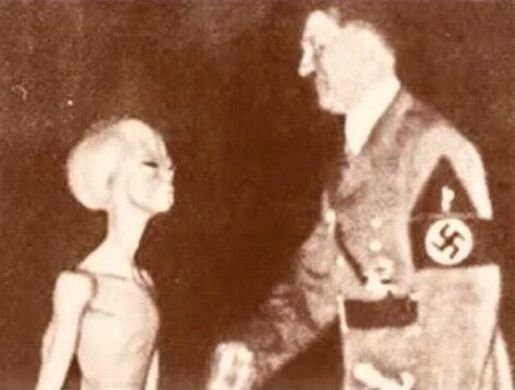







 appeal made since the dawn of the modern UFO era (post-1947) in support of the claim that UFOs have been, in fact, a constant in human history. For example, Desmond Leslie in the book he wrote with George Adamski Flying Saucers Have Landed published soon after Velikovsky’s Worlds in Collision eschews the freshly-minted expression ‘flying saucer’, preferring “to use the ancient names for the sky disks such as ‘car celestial’, ‘vimanas’, and ‘fiery chariots'” (14). Ancient Astronaut “theorists” refer also to ancient art, seeing there depictions of flying saucers and extraterrestrials.
appeal made since the dawn of the modern UFO era (post-1947) in support of the claim that UFOs have been, in fact, a constant in human history. For example, Desmond Leslie in the book he wrote with George Adamski Flying Saucers Have Landed published soon after Velikovsky’s Worlds in Collision eschews the freshly-minted expression ‘flying saucer’, preferring “to use the ancient names for the sky disks such as ‘car celestial’, ‘vimanas’, and ‘fiery chariots'” (14). Ancient Astronaut “theorists” refer also to ancient art, seeing there depictions of flying saucers and extraterrestrials. and it was precisely the strikingly realistic manner of the then newly-discovered cave paintings of Altamira that gave an impulse to the visual arts at the beginning of last century, most famously perhaps in the work of Picasso. On the other hand, I’m unaware of any paleontologists inspired by the Odyssey to search for the remains of the Cyclops nor does anyone, to my knowledge, believe The Sorcerer of Les Trois-Frères to be a realistically-depicted humanoid. Indeed, this interpretive move parallels “literal” readings of the Bible that support the belief in the reality of a global inundation in the distant, mythological past. All these hermeneutics (interpretive approaches) err in the roughly the same way: they project a historically, culturally, and socially local communicative convention (namely, one of our own) onto human textual and artistic production in general.
and it was precisely the strikingly realistic manner of the then newly-discovered cave paintings of Altamira that gave an impulse to the visual arts at the beginning of last century, most famously perhaps in the work of Picasso. On the other hand, I’m unaware of any paleontologists inspired by the Odyssey to search for the remains of the Cyclops nor does anyone, to my knowledge, believe The Sorcerer of Les Trois-Frères to be a realistically-depicted humanoid. Indeed, this interpretive move parallels “literal” readings of the Bible that support the belief in the reality of a global inundation in the distant, mythological past. All these hermeneutics (interpretive approaches) err in the roughly the same way: they project a historically, culturally, and socially local communicative convention (namely, one of our own) onto human textual and artistic production in general.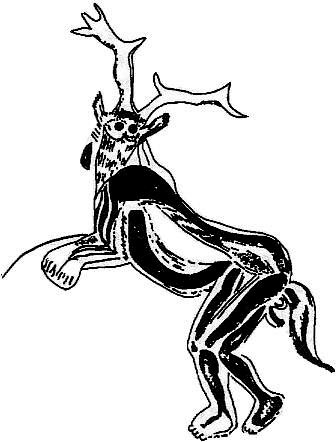
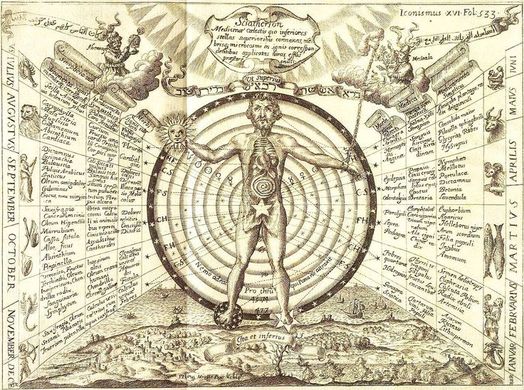
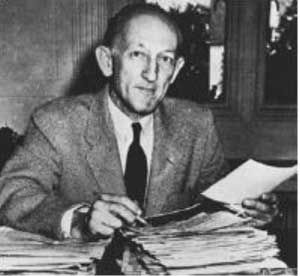
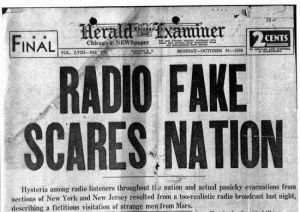
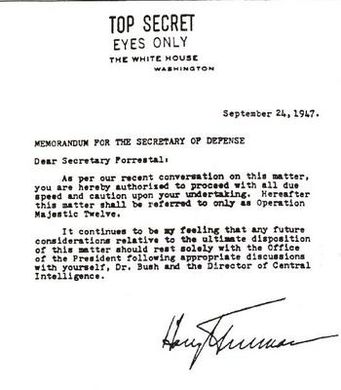 Hand in hand with this motif is that of the insider able to access this otherwise secret or tactfully unpublicized information, a figure that has morphed, today, into the whistleblower. Keyhoe, as an ex-Marine pilot, maintained many contacts within the military and government. Most of the narrative of his books is conversations he has with these inside sources. The final chapters of The Flying Saucers are Real find Keyhoe studying over two hundred secret Air Force files released to him and his petitioning a general of his acquaintance for the more than one hundred he had been denied! This figure with access to inside information undergoes a change as the official relation to the phenomenon (at least in its public guise) develops from secrecy, to debunkery, to indifference. The truth is no longer obtained via official documents from official channels, but via leaked or hacked documents or whistleblower,
Hand in hand with this motif is that of the insider able to access this otherwise secret or tactfully unpublicized information, a figure that has morphed, today, into the whistleblower. Keyhoe, as an ex-Marine pilot, maintained many contacts within the military and government. Most of the narrative of his books is conversations he has with these inside sources. The final chapters of The Flying Saucers are Real find Keyhoe studying over two hundred secret Air Force files released to him and his petitioning a general of his acquaintance for the more than one hundred he had been denied! This figure with access to inside information undergoes a change as the official relation to the phenomenon (at least in its public guise) develops from secrecy, to debunkery, to indifference. The truth is no longer obtained via official documents from official channels, but via leaked or hacked documents or whistleblower, 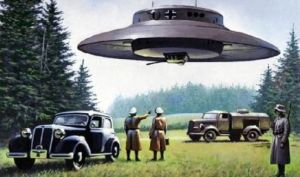 Here, the myth of the Nazi flying saucer, arguably first popularized by Holocaust denier
Here, the myth of the Nazi flying saucer, arguably first popularized by Holocaust denier 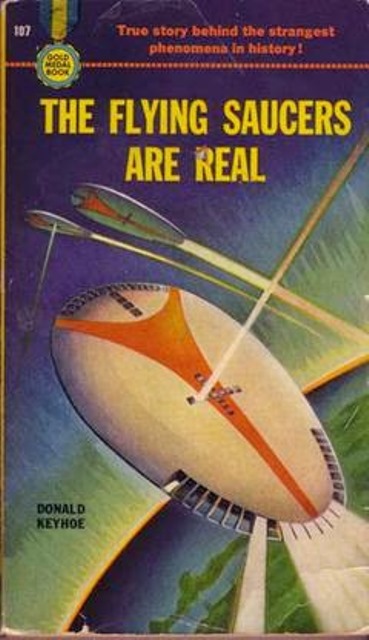
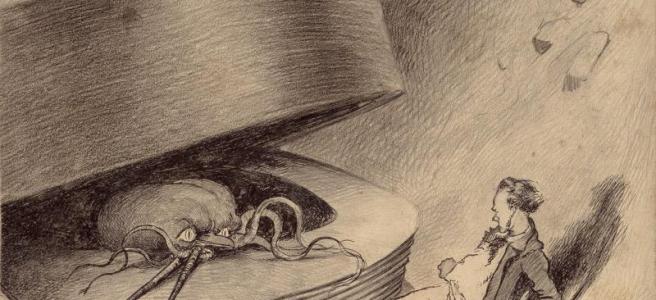
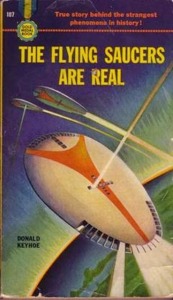 An important ufological popularizer of the ETH is Donald Keyhoe. In his first book, The Flying Saucers are Real (1950), he wrestles with the question of the origin of the flying discs. Having been pushed to the ETH by a process of elimination, he tries “to imagine how they [ETIs] might look” (136). Having read what he could of what we today call exobiology, he understands that there are “all kinds of possibilities.” Then, he makes a telling confession:
An important ufological popularizer of the ETH is Donald Keyhoe. In his first book, The Flying Saucers are Real (1950), he wrestles with the question of the origin of the flying discs. Having been pushed to the ETH by a process of elimination, he tries “to imagine how they [ETIs] might look” (136). Having read what he could of what we today call exobiology, he understands that there are “all kinds of possibilities.” Then, he makes a telling confession: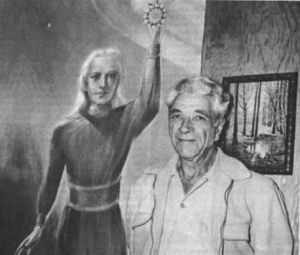
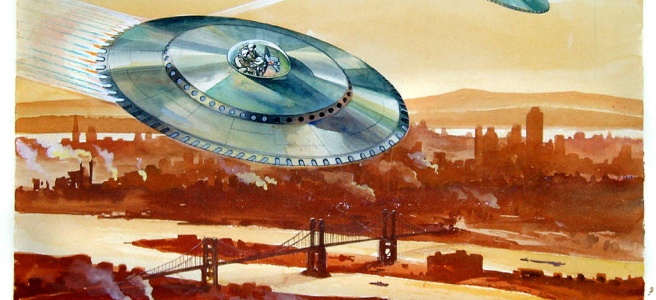

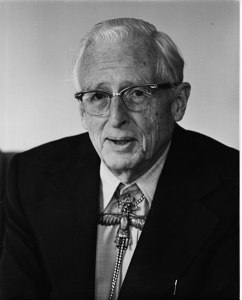





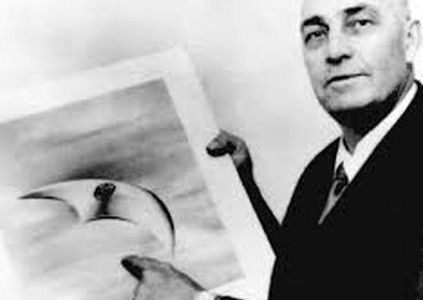


 to be tight-lipped (when they have lips), but the Space Brothers of the Contactees and channelers are overwhelmingly loquacious. To tease out the politics from the communications received since the 1940s (and before, from the denizens of the Solar System encountered by Swedenborg, the various Ascended Masters of Blavatsky’s Theosophy?…) would demand the dedication of a team of dogged readers, which, luckily, would not have to start from scratch. There is already a small body of research, produced primarily by religious studies scholars. One example of an explicitly worked-out utopia, however, whose blueprint comes from the ETs who created all life on earth (according to their designated spokesman
to be tight-lipped (when they have lips), but the Space Brothers of the Contactees and channelers are overwhelmingly loquacious. To tease out the politics from the communications received since the 1940s (and before, from the denizens of the Solar System encountered by Swedenborg, the various Ascended Masters of Blavatsky’s Theosophy?…) would demand the dedication of a team of dogged readers, which, luckily, would not have to start from scratch. There is already a small body of research, produced primarily by religious studies scholars. One example of an explicitly worked-out utopia, however, whose blueprint comes from the ETs who created all life on earth (according to their designated spokesman 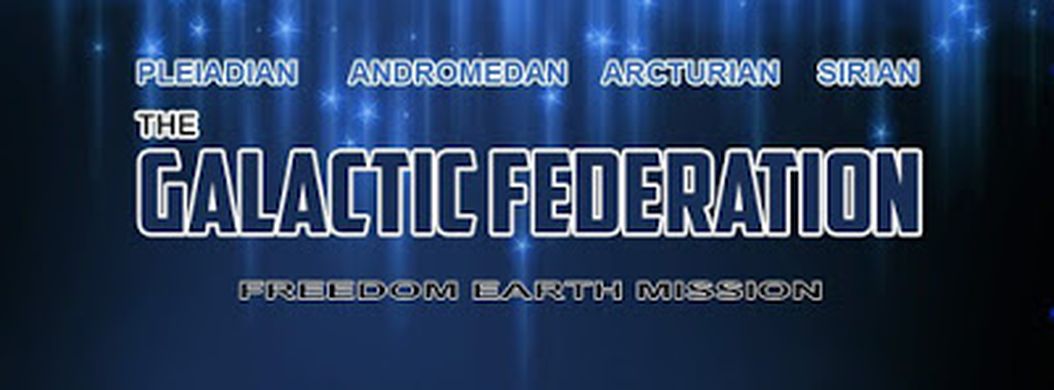




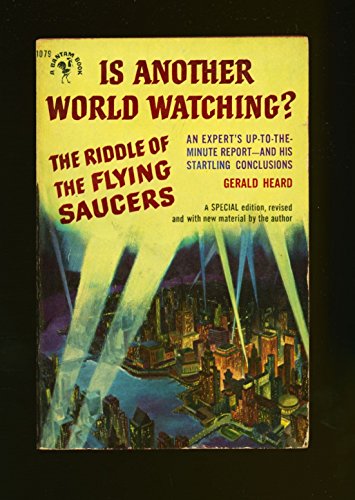 Gerald Heard. The Riddle of the Saucers: Is Another World Watching? London: Winter and Worsfold, 1950. 157pp.
Gerald Heard. The Riddle of the Saucers: Is Another World Watching? London: Winter and Worsfold, 1950. 157pp.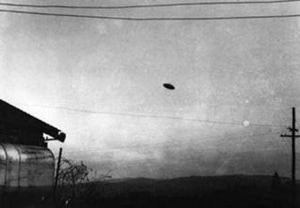 the discs’ pilots, like we would soon be, are space explorers. He then ranges over the possible origins of the discs and concludes with the hypothesis Jung notes, that the pilots are likely “super bees”—from Mars. Further evidence of Mars’ being the discs’ homebase is the peculiar size, appearance, and orbits of Mars’ moons, Demos and Phobos, whose oddness prompts Heard to propose they are artificial, orbital launch platforms. Heard then, in classic, ufological style, detours into a catalogue of premodern sightings, from the Eighteenth Century to Foo-fighters and Ghost Rockets, before speculating that the Martian bees’ purpose is likely to observe our industrial, technological, and military development, and to determine what threat the earth might pose to Mars, drawn in the first instance by their witnessing the detonation of atomic bombs. Heard concludes by summarizing the classic argument that, since the flying dics are neither hallucination nor terrestrial they must therefore be extraterrestrial.
the discs’ pilots, like we would soon be, are space explorers. He then ranges over the possible origins of the discs and concludes with the hypothesis Jung notes, that the pilots are likely “super bees”—from Mars. Further evidence of Mars’ being the discs’ homebase is the peculiar size, appearance, and orbits of Mars’ moons, Demos and Phobos, whose oddness prompts Heard to propose they are artificial, orbital launch platforms. Heard then, in classic, ufological style, detours into a catalogue of premodern sightings, from the Eighteenth Century to Foo-fighters and Ghost Rockets, before speculating that the Martian bees’ purpose is likely to observe our industrial, technological, and military development, and to determine what threat the earth might pose to Mars, drawn in the first instance by their witnessing the detonation of atomic bombs. Heard concludes by summarizing the classic argument that, since the flying dics are neither hallucination nor terrestrial they must therefore be extraterrestrial.
